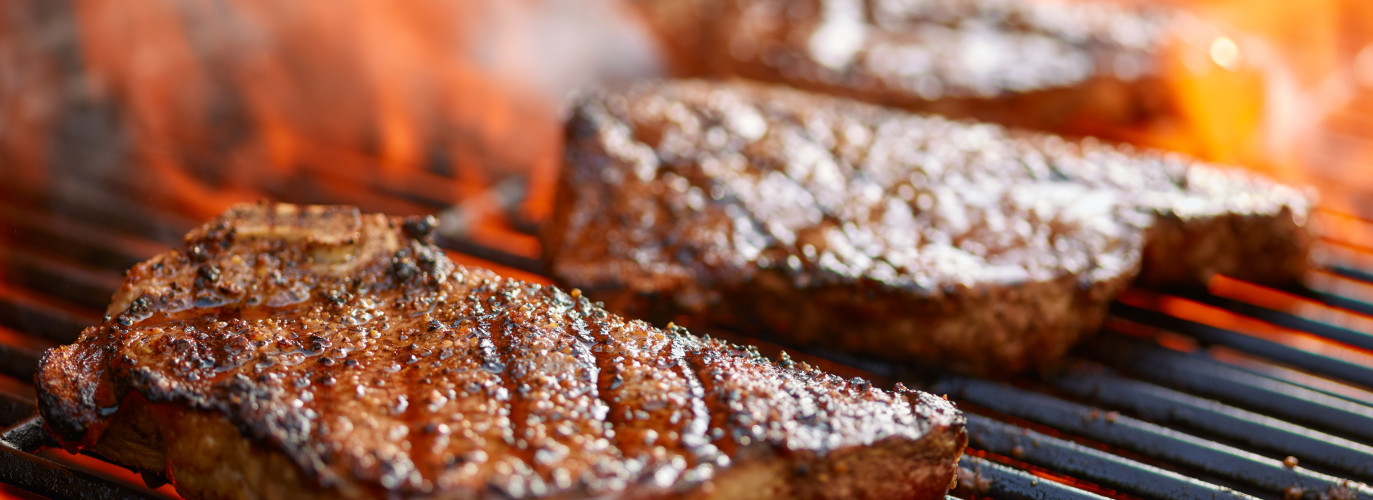Aug 29, 2024

By Rick McNary
There are two ways you can buy beef, pork, lamb or bison from a farmer. One way is to buy in bulk by selecting a quarter, half or whole of the animal. The other way is to purchase individual cuts such as ground meat, roasts and chops. What is the difference?
It depends on the licensing level between Kansas Department of Agriculture (KDA) and United States Department of Agriculture (USDA) of the meat locker processing the protein. One is state (KDA), the other is federal (USDA).
Buying in bulk – custom processors
Many small meat lockers are only KDA licensed, which means when you purchase protein from the farmer, that farmer can only sell it to you in quarters, halves or wholes. It’s important to note you are buying the animal from the farmer, but the locker is processing it for you per your instructions.
These are known as custom lockers because you, the purchaser of the animal from the farmer, work directly with the locker to customize your meat order. These lockers provide you with a “cut sheet,” where you note the types of cuts you want. This can be confusing for anyone not used to buying in bulk because you might end up with cuts you normally wouldn’t purchase. Remember, you’re buying a quarter, half or whole of an animal which means there’s a lot more there than just steaks and roasts.
For many, this process can be confusing, that’s what Kansas State University came up with a Beef Processing Options for Consumers Guide to help clarify it for you. The unique part of buying in bulk is you spread the cost out over all the cuts, rather than just buying an individual cut. So, you’re not buying a roast or ham at one price, then the hamburger or bacon at the other – you pay by the pound, not by the cut so your cost is spread out. While you might end up paying $6 a pound for hamburger, you’re also only paying $6 a pound for a filet mignon.
Many of the farmers you purchase meat from also have guides as to how to order the cuts, what to expect in the final product and how much freezer space you’ll need for a quarter, half or whole.
Buying in bulk is also a great way to purchase meat and share it with friends and families. Each year at Christmas, we purchase an entire beef, then have it processed into various cuts and give each of our six children an equitable distribution.
It is important to note that KDA-licensed lockers can only sell in bulk.
USDA-inspected processing
Some lockers go through the rigorous process of becoming USDA certified, which gives both the farmer, and the locker, the ability to sell individual cuts. These lockers are required to pay for a USDA inspector to be on site for certain periods of time during the process.
USDA-licensed meat lockers can either sell in bulk or individual cuts.
If you notice, when someone posts on our Shop Kansas Farms Facebook group or lists their products on our website, www.shopkansasfarms.com, we ask them to list if they are KDA and/or USDA licensed.
Some farmers prefer to work with a USDA-certified facility so they can be more select in the meat cuts they offer and can reach consumers who only want to purchase one or a few cuts at a time.
In addition, livestock growers who use USDA-certified facilities and are appropriately licensed by KDA can also ship those cuts out of state. The process of shipping using dry ice is difficult to learn and can be costly, but it provides the rancher with a national market. Many of the farms listed on our site ship all over the United States.
While many farmers would like to get into selling individual cuts, the challenge is finding a USDA-certified locker close to them. Since it is federally regulated, the costs of additional inspectors and facility upgrades prohibit some lockers from moving from state to federal inspection.
As you browse through our Facebook group, you will notice the distinction. There will be farmers who offer to sell in bulk, then some who offer to sell individual cuts. The difference is the level of licensing between state and federal.
Anyway you ‘cut’ it, both state and federally licensed meat lockers follow safety standards to ensure the meat on your table is safe to eat. The only difference is how the farmer can sell that meat to the consumer; both are safe to eat.
